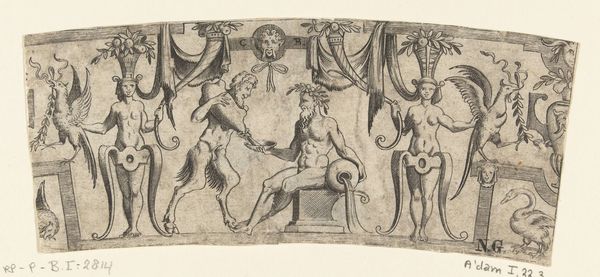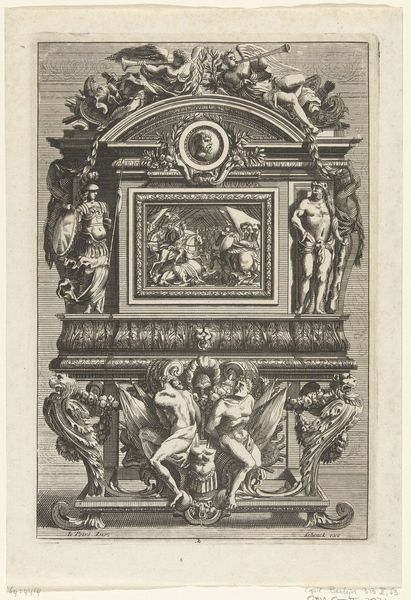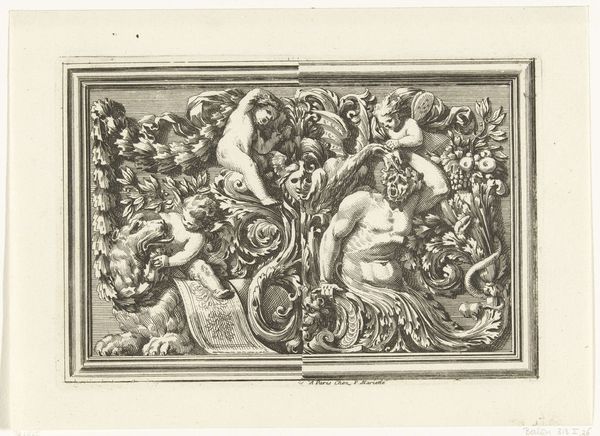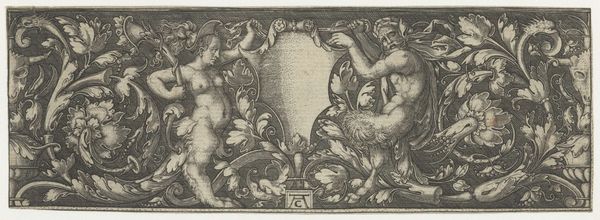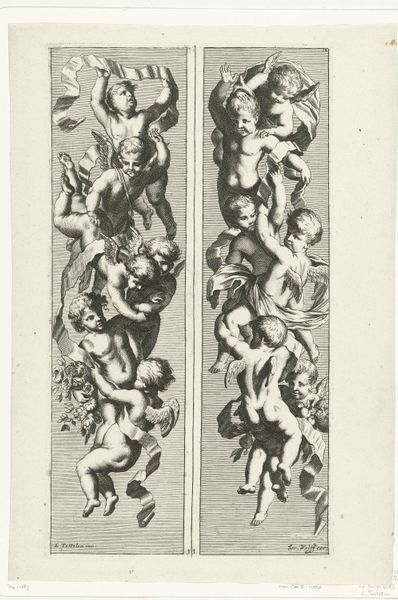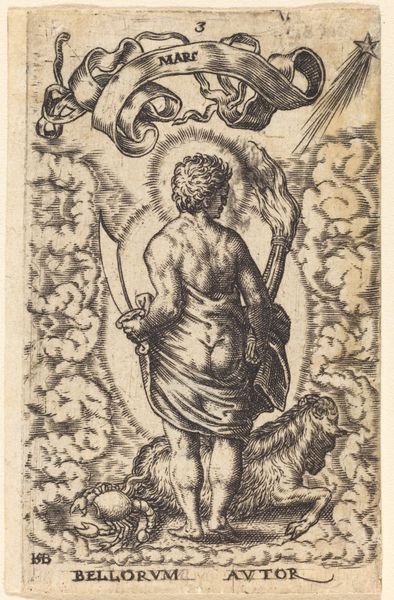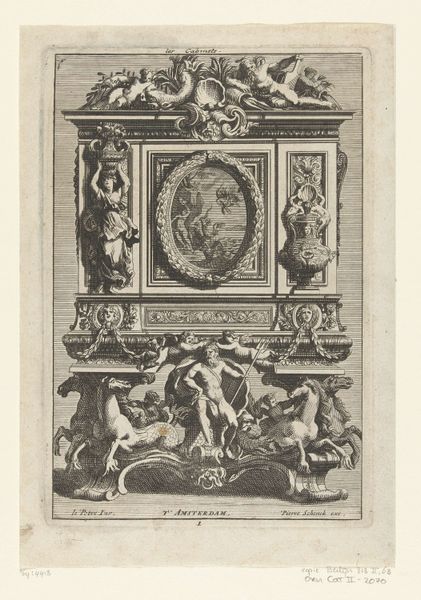
print, engraving
#
allegory
#
baroque
# print
#
figuration
#
history-painting
#
engraving
Dimensions: height 90 mm, width 195 mm
Copyright: Rijks Museum: Open Domain
Editor: So this engraving, "Tast," from around 1655, artist unknown, at the Rijksmuseum... It's busy! There's so much detail packed into this small space. All the flora, fauna and cherubs - what do you see in it? Curator: I see the means of production. This engraving wasn't just about representing 'Taste' allegorically, but about demonstrating the skill and labor invested in the printmaking process. Consider the accessibility of prints. Who owned these, and how did their understanding of "taste" differ across social classes? Editor: That's a good point. It being a print would’ve impacted the materials, price, and consumer. Do the animals and putti have an impact on the artwork beyond the central figure? Curator: Absolutely. The cherubs, flora, and fauna surrounding "Tactus" are not merely decorative. What kind of paper was typically used in the mid 17th century? And how would its texture and availability influence the final product and who eventually possessed this artwork? Consider, too, what dyes were used to create and highlight details in the artwork; depending on who made them or from where they are from, they provide different messages. Editor: Right, the cost and availability of materials dictated the final piece and who interacted with it. The materiality connects directly to its social function. Curator: Exactly. How does understanding this affect our appreciation of the artistic labor and economic value of "Tactus"? Editor: Now I see how examining the process and social context deepens the meaning far beyond just allegorical representation. It highlights who had access to these artworks. Curator: And that, ultimately, influences our understanding of the artwork itself and also reveals more information about the art era of the engraving, touching on a broader scale of materials that also influenced and marked the Baroque.
Comments
No comments
Be the first to comment and join the conversation on the ultimate creative platform.

